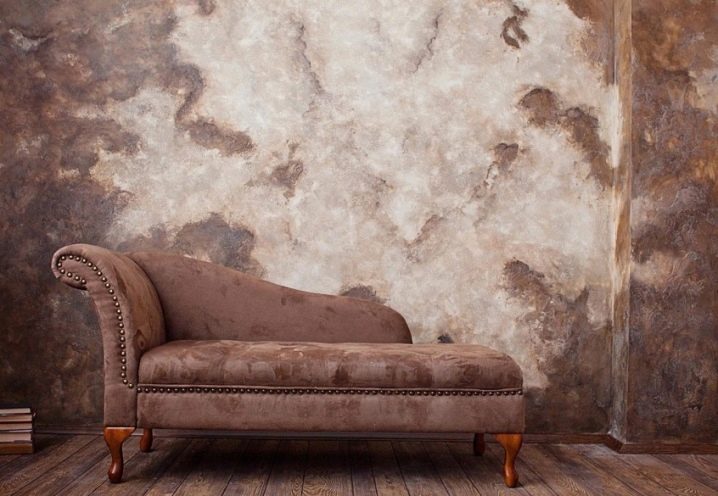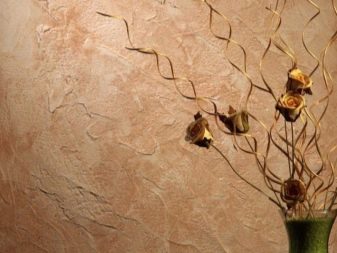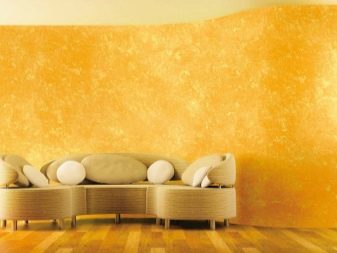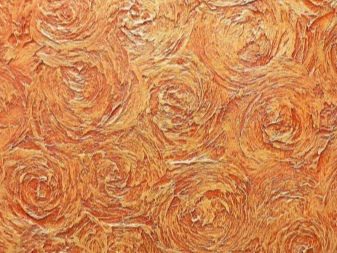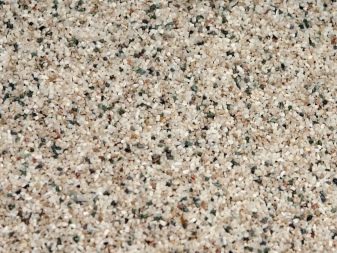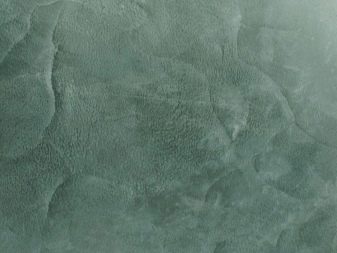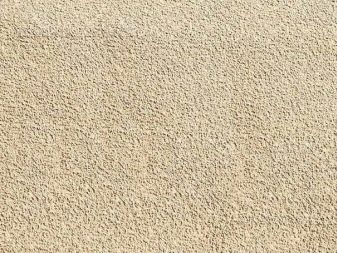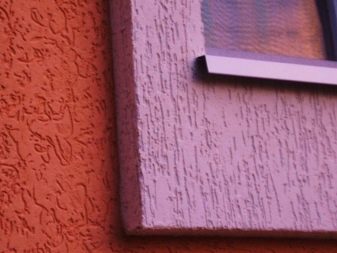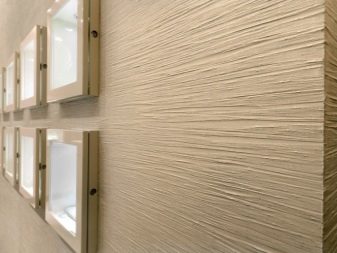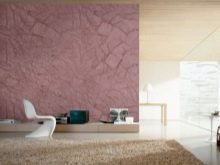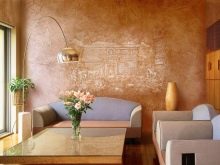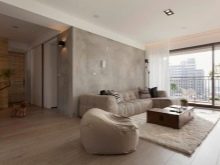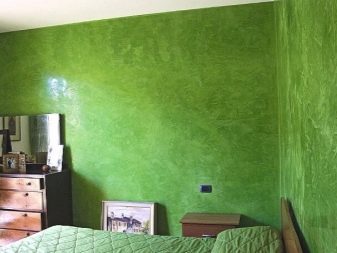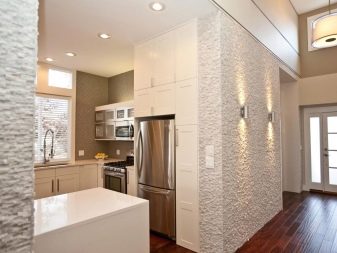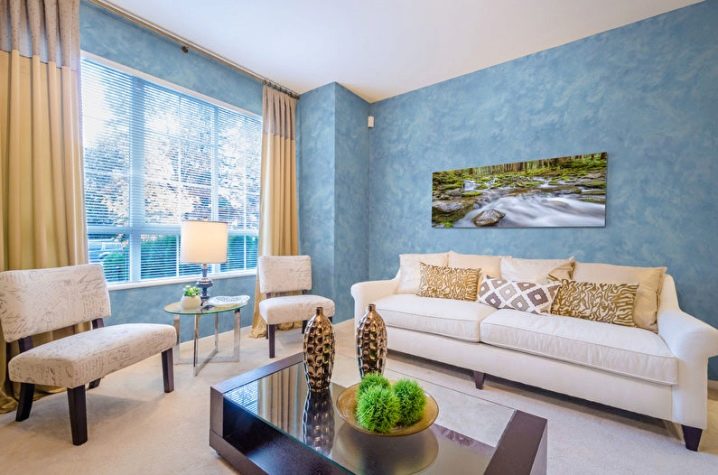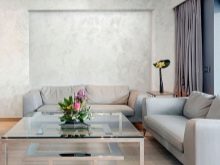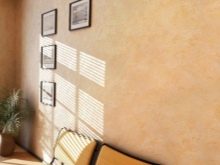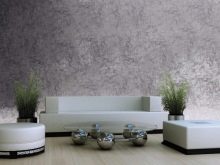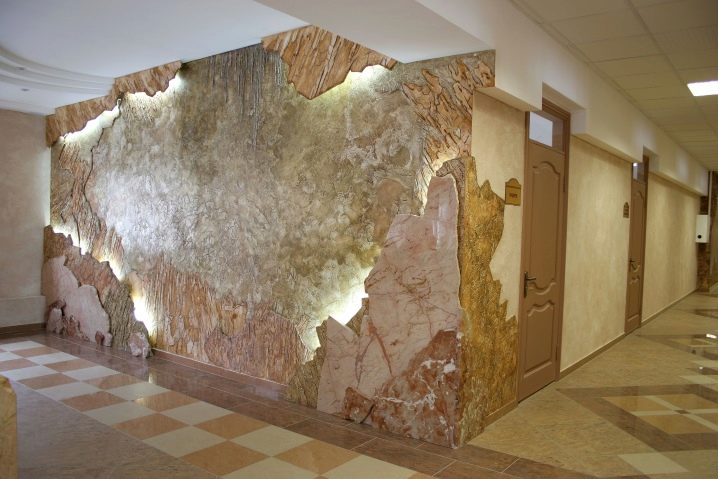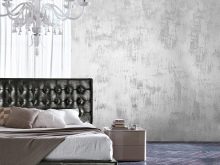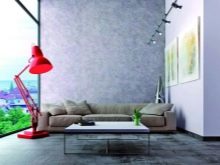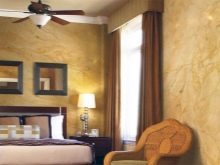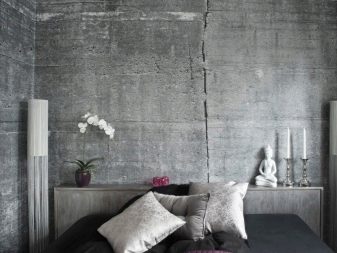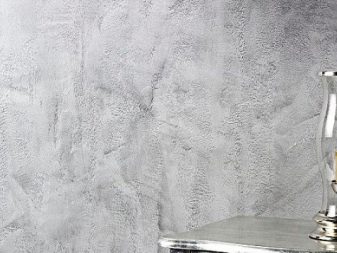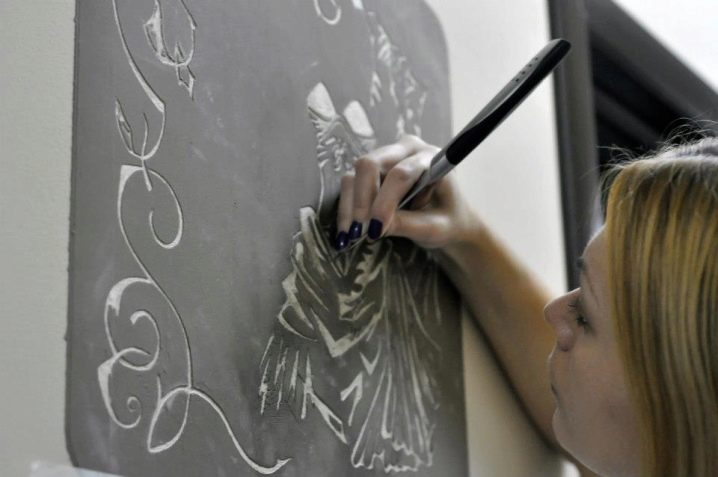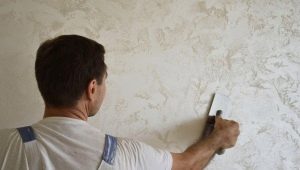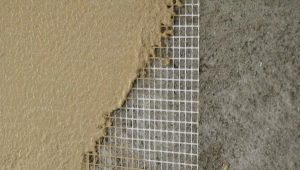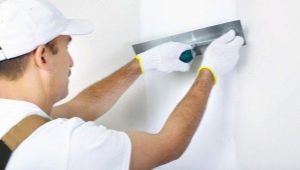Textured plaster in interior design
There is a huge variety of design solutions - tiles and wallpaper, drywall and decorative panels. But among them there is still an underestimated type of coating - textured plaster. It can be laid very carefully, thus forming an attractive design of the room. The practical characteristics of such a material are very attractive; in the aggregate, its properties make it possible to trim corridors, halls and many other rooms.
Special features
The hallways of private houses, apartments and halls of organizations, institutions, even with the most careful handling, are subject to rapid abrasion of coatings. After all, there are stored outerwear and umbrellas, shoes and bags, bags and briefcases - all this brings moisture and dirt. Therefore the covering should be:
- minimally dirty;
- low-key in appearance;
- allowing frequent wet cleaning;
- resisting friction and pressure;
- harmoniously combined with other elements of the hallway and the apartment as a whole.
Textured plaster fully meets these requirements, while there are many types of layouts, stylistic options.
Kinds
Texture plaster can have a variety of fillers:
- organic fibers;
- small stones;
- crushed bricks;
- ground mica;
- quartz sand and more.
Due to this, it is possible to achieve non-standard shades and color overflow. Technologists have learned to create the effects of wind in a sandy desert, velvet cloth, a stone or wood cut. Regardless of the concrete appearance, textured plaster can mask even very strong wall defects. Both a gypsum plasterboard and a properly prepared cement wall can be used as a basis.
Silicone plaster helps to trim the walls in the hallways and living rooms, but its cost is very high. This circumstance is largely justified by the possibility of washing and cleaning the surface while preserving the appearance. Acrylic coating can include a variety of pigments, as a result of which its color varies widely.In addition, even with significant temperature differences, acrylic materials are very resistant.
The relative scarcity of silicate plasters is offset by their low cost. Slightly more expensive mineral compounds, but they have their advantage - the presence in the composition of the cement allows you to guarantee resistance to water.
Tips for choosing
Those who do not have the necessary experience in the use of textured plasters, do not hesitate to consult with experts. Any professional will be able to name several options of different cost, suitable in a particular case. It is necessary to immediately determine the main task:
- cost savings;
- the formation of a bright and non-standard interior;
- accelerated shutdown.
It is also worth studying the chemical composition of the mixture, in which there should be no dangerous impurities. You can not take the plaster in damaged packaging, with blurred inscriptions and symbols.
Technological moments
As in a small apartment, and in a large house method of applying textured plaster is completely identical. Smeared it on the walls with a spatula, to develop a relief will help roller, spatula or stencil.Individual varieties can be applied by spraying. If you use atypical devices for surface treatment (crumpled tissue, toothbrushes and shoe brushes, needles, and more), the resulting look can become completely original. But in any case, the preparation of the composition needs to be completed in 40 minutes maximum, because the plaster hardens quickly and loses its plasticity.
It follows a simple conclusion: the exact surface relief needs to be imagined even before ordering the source material. If it is intended to create not a flat and even base, but a figure plot, you should immediately increase the consumption forecast by 50%.
The use of textured plaster will not succeed if the preparation of the wall was neglected or done poorly. In addition to cleaning the surface, you need to disguise any defects, cracks and the smallest holes with a putty. Then put a layer of primer on the wall, put the plaster itself and cover it with a protective layer. In newly built houses, rough machining is not needed, you can immediately begin to priming.
Wall decoration in an apartment where there are pets, it is best to produce compositions interspersed with natural stone or marble crumbs.
Design recommendations
Typically, textured plaster is applied without any problems. The exception is the Venetian composition, which requires a virtuoso preparation of the foundation. Around the arched structures and door openings, it is advisable to apply the imitation of a stone surface - such a step creates a sophisticated look and does not overly complicate the work.
In the kitchen, the best results are obtained with acrylic textured plaster, which:
- ecologically safe;
- easily converted to any color;
- may even be applied on a relatively poor basis;
- dries rapidly;
- easily tolerates water.
Imitating stone types of plaster suitable for kitchens classic style. They give an equally attractive effect in an Art Deco setting, in minimalist and modern interiors. The most sophisticated and aristocratic version of this design is the Venetian coating. By adding small crumbs of different composition, it can reproduce the type of granite, marble, quartz and onyx surfaces. There are options covered as if with travertine, malachite, jasper.
A very popular solution is plaster with the effect of deliberate aging and “gnawed by bark beetle”. Such material is perfectly woven into both modern and classical compositions that can be applied in the style of a loft. By varying the technique of operation and the fraction of the filler, it is possible to give the grooves a different depth.
Such a coating is easily compatible with Venetian or Moroccan, when combined, they form impressive interiors. Describing the result is unnecessary; such projects should be made up by professional designers, each time individually.
Concrete imitation is recommended for high-tech kitchens, loft, techno or minimalism. Such a decision is justified both for covering walls and for forming aprons in the working areas of the kitchen. So that the decorative plaster on the apron does not suffer and at the same time the design concept has been fully implemented, it is advisable to use transparent tempered glass. Most often, "concrete" is painted in rich gray, monotonous black or white.
But there are other options - paints with different shades in certain areas, reproduction of efflorescence, rust stains or gloss of pure metal.
It is not necessary to form a uniform color surface, there are solutions with tinted "concrete" bright colors. You can reproduce the old or completely new stone, smooth or rough laying.
The sgraffito technique is even more attractive - at first the coating is made as smooth as possible, then it is scratched with the help of a stencil, creating drawings with all sorts of subjects. To form a multicolor composition, apply two stencils and more. On the walls of small rooms, smooth or finely grained ornamental layers of plaster are preferred.
Understand among hundreds and even thousands of possible keys just from the catalog, without expert advice it will not work. It is also worth considering that textured plaster is not always tinted mixture, some of the compositions are presented in a pasty form.
On the correct application of decorative plaster you will learn from the following video.

